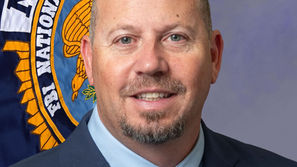‘A little trouble with our video’
- Chuck Doud
- Sep 10, 2016
- 3 min read
It was a little after 5 a.m., Pacific Daylight Time, another beautiful morning in Ridgecrest, Kern County, where beautiful mornings are so commonplace they’re actually boring.
I straightened my tie and was about ready to go to work at the Daily Independent, where I was the editor. I poured myself a second cup of coffee, and as was my habit, sat down to watch the morning newscast on KNBC, the big NBC channel out of Los Angeles.
A man and a woman were anchoring the show, as usual, and who knows what story they were talking about? Behind them was a screen on which were displayed clips to illustrate the story they might be discussing — a car chase, whatever.
Suddenly, the clip that was being shown to illustrate the story they were talking about went blank. “We seem to be having a little trouble with our video,” said one of the anchors. “It sure looks like it,” said the other — about as close to unscripted banter as one would hear on that station which covered all of Southern California.
Then, the blank clip came alive to show an airliner flying into a New York skyscraper.
The two news anchors didn’t seem to notice. They went on with their story — and then, as if on cue, they both stopped talking. Their mouths were open in shock. They couldn’t believe what they were seeing.
“Ladies and gentlemen,” the female anchor said, “it looks like there’s been a terrible accident in New York City. It looks like an airplane has flown into one of the skyscrapers.”
Their shock was the beginning of realization of was happening throughout the United States at that time. Almost 300 million Americans, in various stages of wakefulness and concentration, were beginning to grasp that something terrible had occurred. Little did they know how much more terrible it would become.
NBC News, located in Rockefeller Center, not far from the twin towers that were being targeted, was the first television network to respond. Camera operators literally ran into the street, heading toward the scene of the tragedy. That’s why they were able to get such dramatic and horrifying shots of the second plane striking the second tower.
Nobody could believe it. I certainly couldn’t.
I knew there was nothing I could do to cover that story, happening almost 3,000 miles from Ridgecrest. And then, sitting there, watching with the rest of America what was happening, I remembered something. A friend of mine, a fellow member of the Ridgecrest Rotary Club, was in New York attending a convention.
This was before the days of smart phones, which turned everyone who wanted to be one into digital photographers. If there was a camera in New York that could be put to use, it would have to be film. I called my friend’s office and asked if they knew how to get hold of him. Amazingly, they gave me the number of his hotel room.
I called. He answered. I said, “Do you have a camera with you?” And he replied, “No, but I know a guy who does.” That man’s camera was a 35 mm point and shoot.
“Can he get me some pictures?” I asked.
“I’ll call you back,” he said.
Then I remembered Mrs. Doud was still asleep. I went into the bedroom and turned on the television. She sat up and remained there, mesmerized.
Finally, the phone rang. My Ridgecrest friend said the man he knew who had the camera already had shot the second plane hitting the tower and was trying to get the film developed As it turned out, he had found a developing shop that had the ability to develop the film, scan it, turn it into a PDF and email it — routine stuff now, but very high tech back then for me.
After I took care of business, I was able to rest my brain a moment, and then it dawned on me. This was America. It had been attacked. I was an American. That meant I, too, had been attacked.
For a few moments, I choked back tears.


























Comments